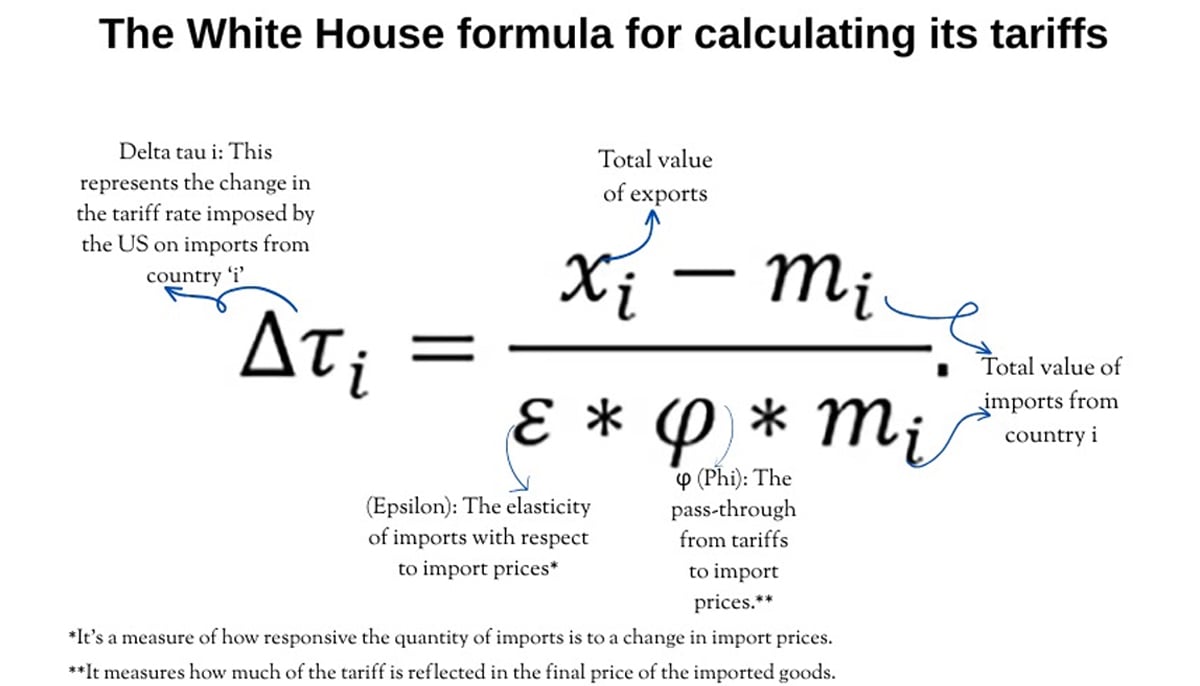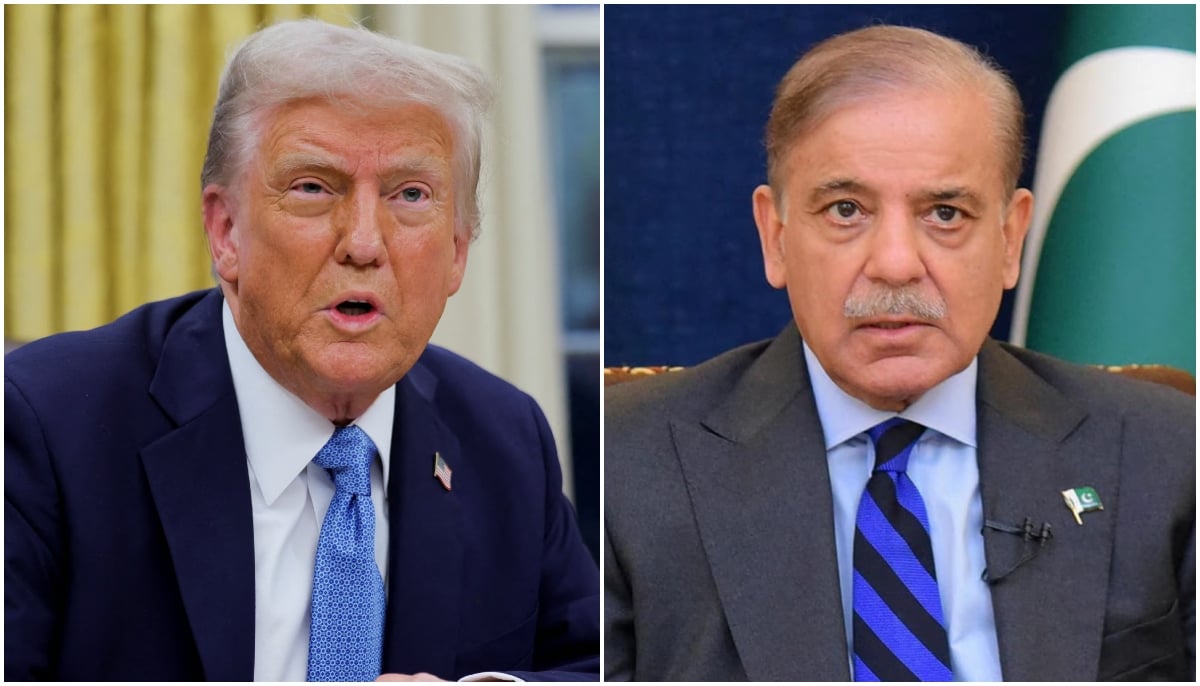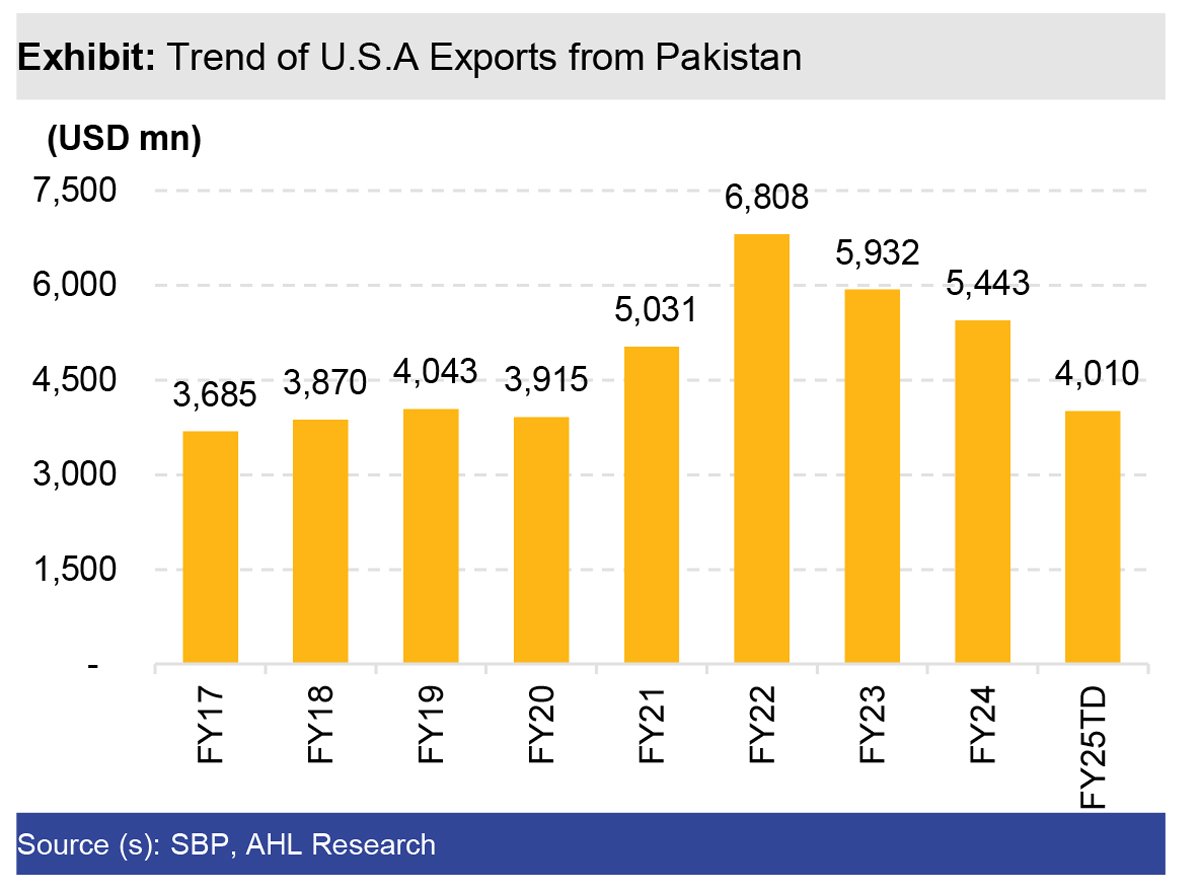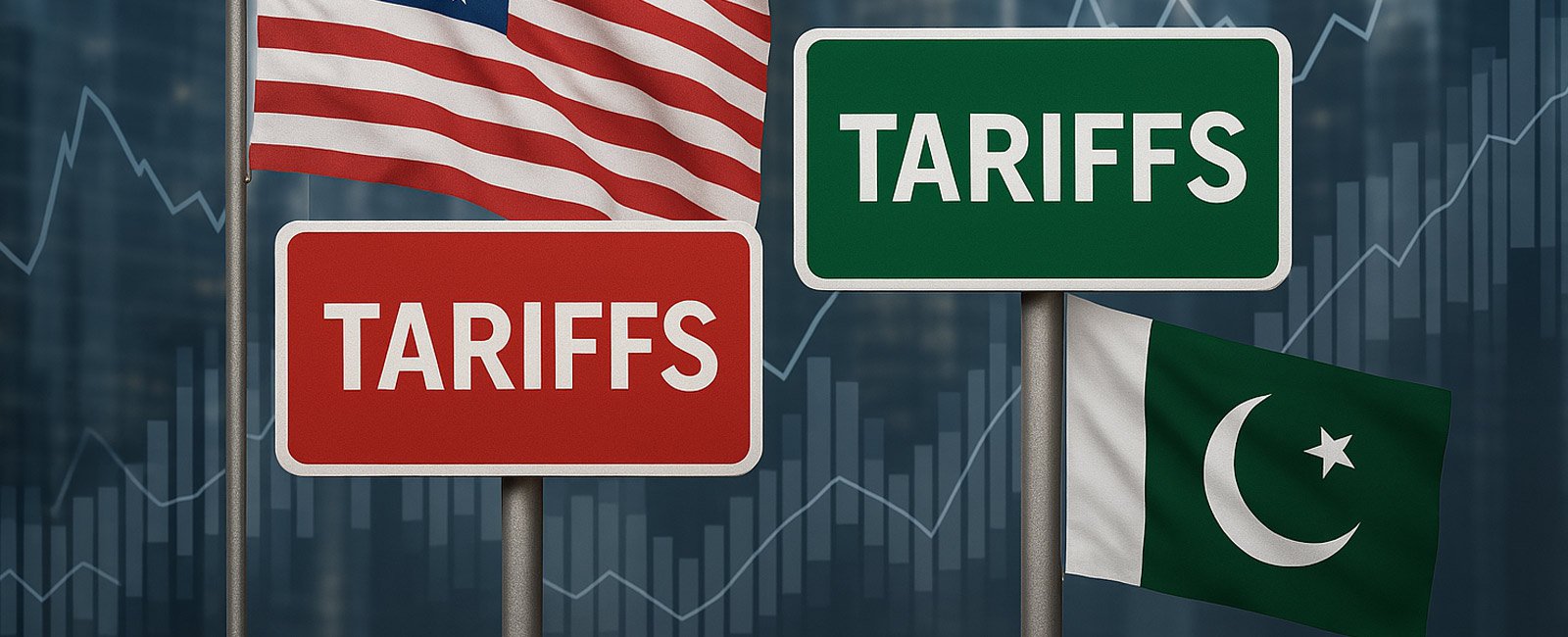Turning the tables: Can Pakistan outplay the US tariff game?
Trump's unprecedented levy, part of most aggressive US trade policies in a century, has rattled global markets

Imagine a high-stakes match of chess where one sloppy move sends the entire game off balance. That’s precisely what happened when US President Donald Trump imposed a staggering 29% tariff on imports from Pakistan — one of the sharpest economic strikes in recent history. This unprecedented levy, part of the most aggressive US trade policies in a century, has rattled global markets and put emerging economies on edge.
For Pakistan, whose textile industry heavily relies on exports to the US, this tariff is more than just a financial setback — it’s a direct hit to its economic backbone. As the country of over 240 million people now faces a 29% tariff on its exports to the US significantly higher than the 10% baseline, and set to take effect on April 5.
The move threatens currency stability, foreign reserves, and sovereign credit ratings, not just in Pakistan but across Asia. As the trade war intensifies, the world watches closely: Will Pakistan and other affected economies find a way to counter this powerful economic blow, or are they being pushed toward economic isolation?
Pakistan’s trade dynamics with US
The United States remains Pakistan’s top export destination, followed by China and the United Arab Emirates (UAE).
According to the State Bank of Pakistan (SBP), total exports to the US during the fiscal year 2023-24 amounted to $5.44 billion, reflecting a decline of 8.41% compared to $5.93 billion in 2022-23..
Over the years, Pakistan’s exports to the US have experienced fluctuations, reaching a peak of $6.8 billion in FY22 before seeing a decline in the subsequent years.
Meanwhile, imports from the US stood at $1.87 billion in FY24, helping Pakistan maintain a trade surplus.
What are tariffs and how US calculates them?
Tariffs, essentially a tax on imports, are charged as a percentage of the price a buyer pays a foreign seller. In the US, these are collected at 328 ports of entry by Customs and Border Protection agents.
Typically used to regulate trade and protect domestic industries from cheaper foreign competition, tariffs can significantly impact exporters — particularly in a country like Pakistan, where trade with the US contributes notably to export earnings and overall economic performance.

The US Trade Representative calculates tariffs based on several key factors: total exports and imports, the elasticity of demand, and the pass-through rate of tariffs to import prices. For Pakistan, the trade deficit — $3 billion in 2024 — played a major role in determining the tariff rate. Using the formula that considers Pakistan’s $2.1 billion in exports, $5.1 billion in imports, and economic elasticity measures, an initial tariff of 59% was calculated. This figure was then discounted by half, resulting in the 29% tariff now in place.
This sharp increase could make key Pakistani exports — such as textiles, leather goods, and surgical instruments — less competitive in the US market. As production costs rise, exporters fear a decline in demand, threatening industries that rely heavily on American buyers.
What does it mean for Pakistan?
Miftah Ismail, former finance minister, pointed out Pakistan’s long-standing economic fragility, blaming successive governments for mismanaging policies.
"The government has mismanaged Pakistan’s economy — and it’s not just this government. Successive governments have mishandled the economy, burdening the country with excessive foreign debt while failing to boost exports," Ismail, the leader of Awam Pakistan Party said.
He highlighted the country’s over-reliance on foreign debt and its failure to diversify exports as key weaknesses that have left Pakistan exposed to external shocks. Given that Pakistan exports goods worth $5 billion to the US annually, Ismail warned that any policy change in Washington could severely disrupt the country’s trade balance.
The tariff imposition also signals broader uncertainty in global trade relations. Adding to these concerns, Dr Khaqan Najeeb, former adviser to the Ministry of Finance, underscored the uncertainty created by the US's reciprocal tariff policies. He described the move as a setback for globalisation and financial markets, noting that while a 10% tariff baseline was anticipated, targeting major trading partners like Pakistan could have severe consequences.

“The tariffs are putting additional pressure on the economy. With a trade volume of nearly $7 billion with the US, Pakistan must now focus on strategic negotiation and improving local business productivity. Only through structural reforms, like revamping the energy sector, can Pakistan hope to ease the strain caused by this tariff imposition,” Dr Najeeb told Geo.tv.
Beyond immediate economic challenges, the tariff hike raises concerns about Pakistan’s diplomatic positioning. While foreign affairs and national security reporter Syed Baqir Sajjad noted that the impact on US-Pakistan relations might be limited due to the relatively small trade volume, the financial strain on exporters will be considerable. The need for trade negotiations is urgent, but as Sajjad pointed out, any meaningful resolution is likely to take time.

“The tariffs will add to the financial pressure Pakistan already faces with its exports to the US. The only real way to address this is through trade negotiations. However, these talks could take a while before they bear fruit,” Sajjad informed Geo.tv.
As Pakistan navigates this economic challenge, the focus will now shift to policy responses—both in terms of domestic reforms and diplomatic efforts to ease trade restrictions. Without decisive action, the tariff hike could deepen Pakistan’s economic instability in the long run.
Pakistan’s next move
With the tariffs already in place, the diplomatic strategy for Pakistan becomes paramount. Experts agree that Pakistan needs to carefully navigate these troubled waters to avoid further escalation in trade relations with the US.
Abdul Rauf Shakoori, a corporate lawyer based in the US, argued that Pakistan must intensify its diplomatic efforts to address the issue. He explained to Geo.tv that these tariffs, which are part of Trump's 'America First' agenda, could have serious ramifications if not tackled proactively.
Pakistan should prioritise negotiating with the US government for tariff reductions.
— Abdul Rauf Shakoori
“Pakistan should prioritise negotiating with the US government for tariff reductions. The goal should be to emphasise the mutual economic benefits of continuing trade relations and the disruption that these tariffs will cause not only to Pakistan but to the global supply chain,” Shakoori suggested.
Maleeha Lodhi, Pakistan's former ambassador to the US, shared a similar perspective. She argued that the increased tariffs will inevitably make Pakistani goods more expensive in the US, which will likely lead to a reduction in demand.
However, she highlighted the opportunity for Pakistan to play a larger diplomatic role by leveraging the US-China trade war to its advantage.
“Pakistan needs to ensure that its diplomatic efforts are concentrated on bilateral negotiations for tariff reductions. Additionally, by using diplomatic channels, Pakistan can advocate for the strategic benefit of a sustained trade relationship with the US while also mitigating the economic blow caused by these new tariffs,” Lodhi told Geo News.
Breaking free from US dependence
In light of the potential long-term impacts of these tariffs, experts agree that diversification of Pakistan’s export base is crucial to safeguarding its economic future.
Sana Tawfik, an economist at Arif Habib Limited (AHL), a brokerage, acknowledged that Pakistan’s textile sector would bear the brunt of the tariff hike. However, she also pointed out that there was a potential opportunity for Pakistan to gain a competitive edge over other countries, such as Bangladesh and Vietnam, which were currently facing even higher tariffs.
Pakistan has an opportunity to benefit from the higher tariffs imposed on competing nations.
— Sana Tawfik
“While the immediate impact on Pakistan’s textile exports to the US is concerning, Pakistan has an opportunity to benefit from the higher tariffs imposed on competing nations. If we focus on improving product quality and diversifying our offerings, we can improve our market position and maintain competitiveness,” Tawfik told Geo.tv.
Shakoori also discussed the importance of diversification in the face of this new challenge. He argued that Pakistan must focus on strengthening regional trade relationships, particularly with the European Union, China, and the Middle East, to reduce its reliance on the US market.
“Pakistan must invest in value-added manufacturing and explore new consumer bases. This will help reduce vulnerability to unilateral trade restrictions and create a more resilient economy,” Shakoori noted.
The new tariffs imposed by President Trump represent a formidable challenge for Pakistan’s economy. The country's heavy reliance on exports, particularly textiles, to the US makes it particularly vulnerable.
Ismail, the former finance minister said that Pakistan exports to Africa and other countries, but obviously the amount of wealth that consumers in America and Europe have is not to be found elsewhere, so it's very difficult to diversify.
"Yeah, we could diversify more, but it's very hard to diversify away from the US market," he said.
Turning tariffs into opportunity
A note from the AHL acknowledges the risks posed by the US tariffs but also suggests that Pakistan has an opportunity to reposition itself.
The brokerage believes that despite the tariff blow, Pakistan still holds a cost advantage over competitors such as China, Vietnam, and Bangladesh.
- Pakistan has an opportunity to pivot—by improving trade relations and competitiveness, the country can turn this challenge into a strategic advantage.
- Reducing energy costs and diversifying markets will be crucial in mitigating the negative impact.
- If handled strategically, Pakistan can secure new investments, expand trade routes, and strengthen its role in the global supply chain.
Epilogue
There are no two opinions that it’s going to get ugly, but not all will be lost. With Trump’s MAGA-mania-driven new tariffs enforced, the coming months will be critical and equally precarious for Pakistan.
As the country now stands at a crossroads, it has never been in greater need of strong diplomatic negotiations and economic reforms than it is now. To cushion the inevitable shocks, policymakers must scramble to think outside the global economic box.
For exporters — especially in textiles and other key industries — the challenge couldn’t be louder, clearer, or nearer. After all, textiles and its value-added subsectors are the mainstay of Pakistan’s exports.
However, there’s always a way out. With creative strategic planning, improved trade relationships, and diversification into new markets, we can emerge stronger.
As the pivot in the global trade landscape has never been more seismic, Pakistan cannot afford to delay adapting if it is to avoid long-term instability and unlock potential growth.
The only way forward demands resilience, innovation, and unity — across sectors as well as political schools of thought. It is high time that Pakistan acted boldly, for the future of its fragile trade balance hinges on how it responds to these tariffs.




